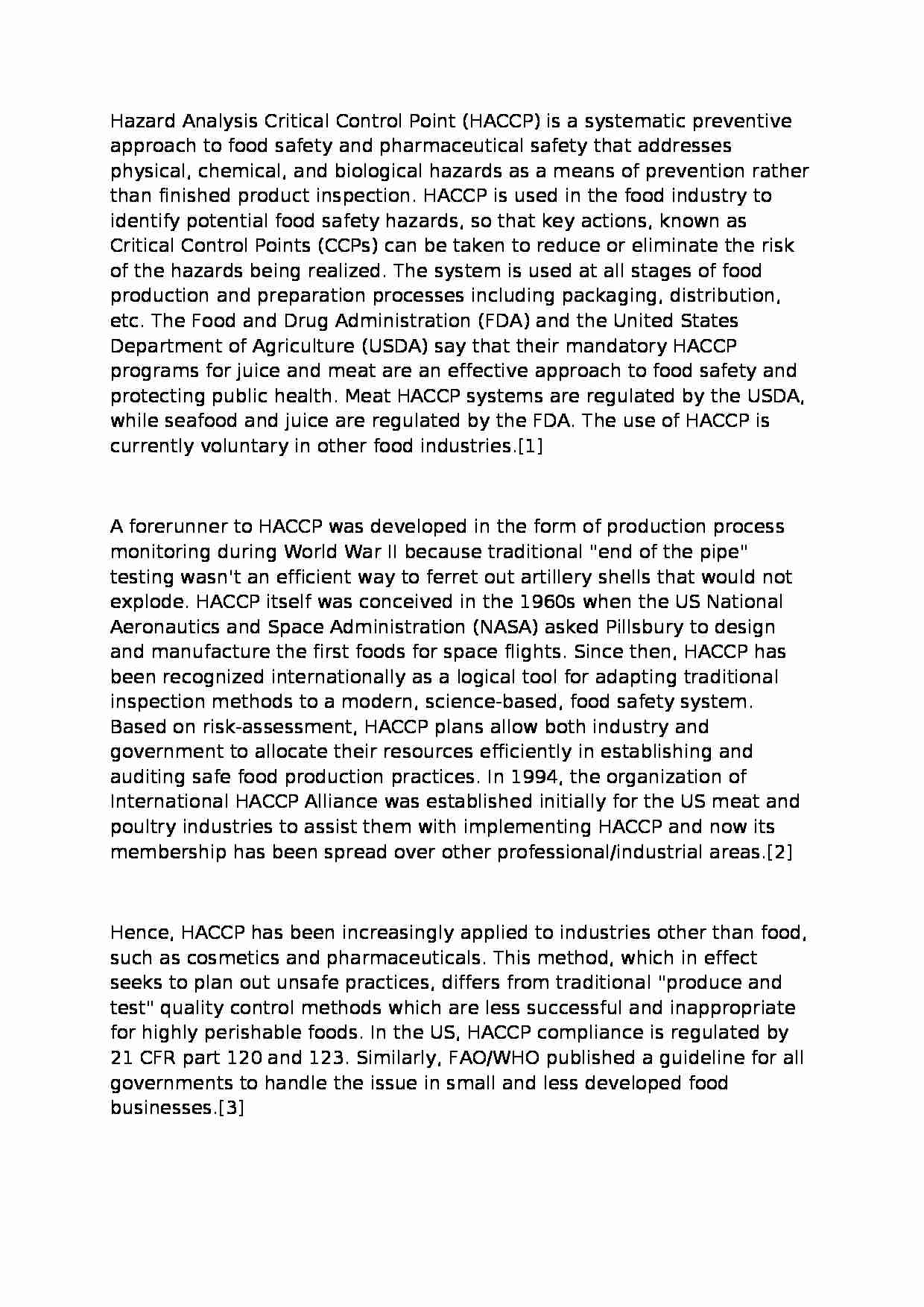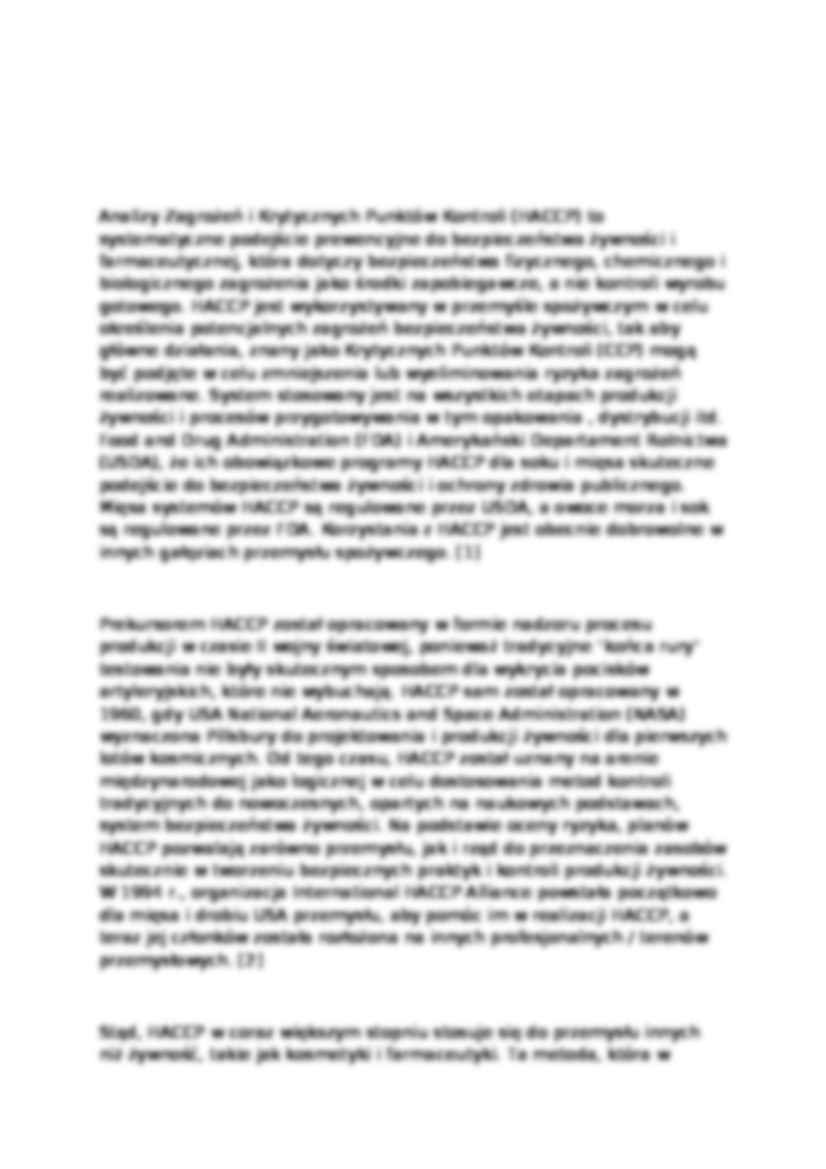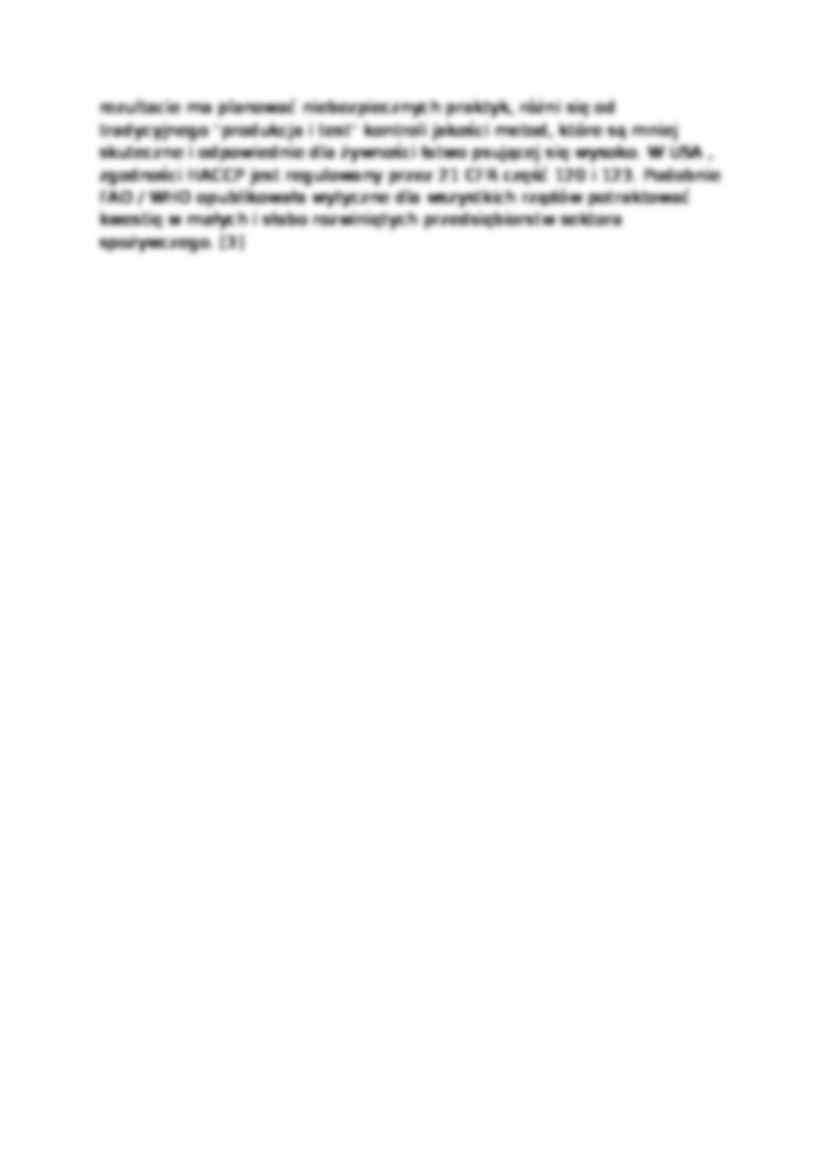To tylko jedna z 3 stron tej notatki. Zaloguj się aby zobaczyć ten dokument.
Zobacz
całą notatkę



Hazard Analysis Critical Control Point (HACCP) is a systematic preventive approach to food safety and pharmaceutical safety that addresses physical, chemical, and biological hazards as a means of prevention rather than finished product inspection. HACCP is used in the food industry to identify potential food safety hazards, so that key actions, known as Critical Control Points (CCPs) can be taken to reduce or eliminate the risk of the hazards being realized. The system is used at all stages of food production and preparation processes including packaging, distribution, etc. The Food and Drug Administration (FDA) and the United States Department of Agriculture (USDA) say that their mandatory HACCP programs for juice and meat are an effective approach to food safety and protecting public health. Meat HACCP systems are regulated by the USDA, while seafood and juice are regulated by the FDA. The use of HACCP is currently voluntary in other food industries.[1]
A forerunner to HACCP was developed in the form of production process monitoring during World War II because traditional "end of the pipe" testing wasn't an efficient way to ferret out artillery shells that would not explode. HACCP itself was conceived in the 1960s when the US National Aeronautics and Space Administration (NASA) asked Pillsbury to design and manufacture the first foods for space flights. Since then, HACCP has been recognized internationally as a logical tool for adapting traditional inspection methods to a modern, science-based, food safety system. Based on risk-assessment, HACCP plans allow both industry and government to allocate their resources efficiently in establishing and auditing safe food production practices. In 1994, the organization of International HACCP Alliance was established initially for the US meat and poultry industries to assist them with implementing HACCP and now its membership has been spread over other professional/industrial areas.[2]
Hence, HACCP has been increasingly applied to industries other than food, such as cosmetics and pharmaceuticals. This method, which in effect seeks to plan out unsafe practices, differs from traditional "produce and test" quality control methods which are less successful and inappropriate for highly perishable foods. In the US, HACCP compliance is regulated by 21 CFR part 120 and 123. Similarly, FAO/WHO published a guideline for all governments to handle the issue in small and less developed food businesses.[3]
Analizy Zagrożeń i Krytycznych Punktów Kontroli (HACCP) to systematyczne podejście prewencyjne do bezpieczeństwa żywności i farmaceutycznej, która dotyczy bezpieczeństwa fizycznego, chemicznego i biologicznego zagrożenia jako środki zapobiegawcze, a nie kontroli wyrobu gotowego. HACCP jest wykorzystywany w przemyśle spożywczym w celu określenia potencjalnych zagrożeń bezpieczeństwa żywności, tak aby główne działania, znany jako Krytycznych Punktów Kontroli (CCP) mogą być podjęte w celu zmniejszenia lub wyeliminowania ryzyka zagrożeń realizowane. System stosowany jest na wszystkich etapach produkcji żywności i procesów przygotowywania w tym opakowania , dystrybucji itd. Food and Drug Administration (FDA) i Amerykański Departament Rolnictwa (USDA), że ich obowiązkowe programy HACCP dla soku i mięsa skuteczne podejście do bezpieczeństwa żywności i ochrony zdrowia publicznego. Mięsa systemów HACCP są regulowane przez USDA, a owoce morza i sok są regulowane przez FDA. Korzystania z HACCP jest obecnie dobrowo
... zobacz całą notatkę






Komentarze użytkowników (0)